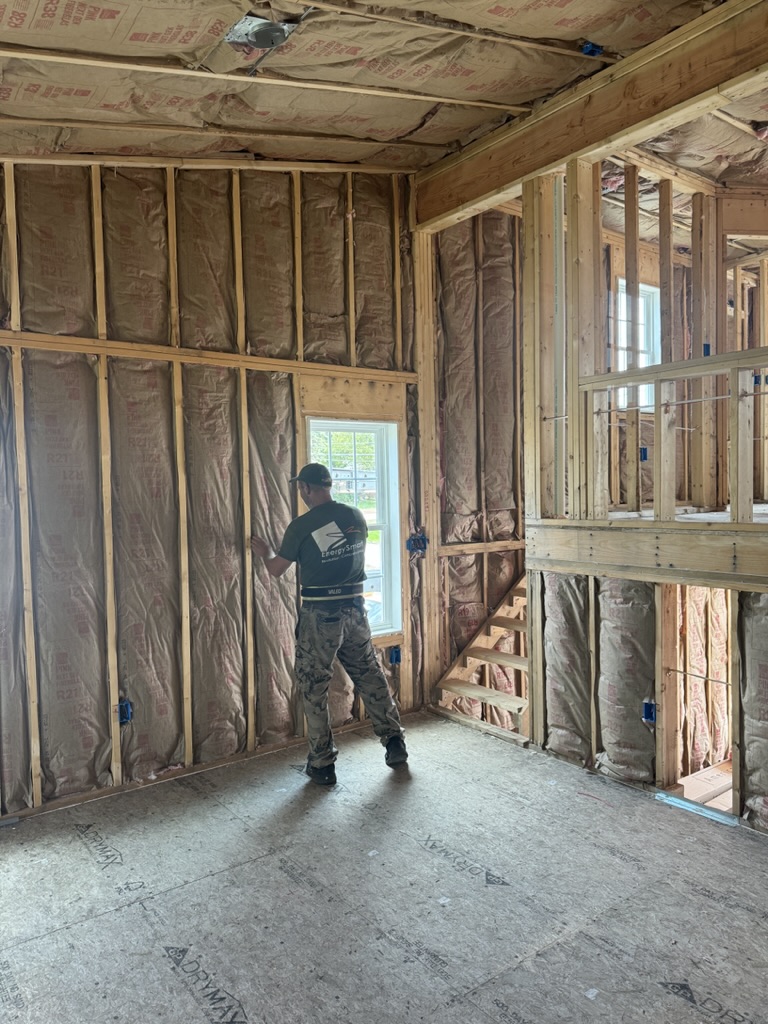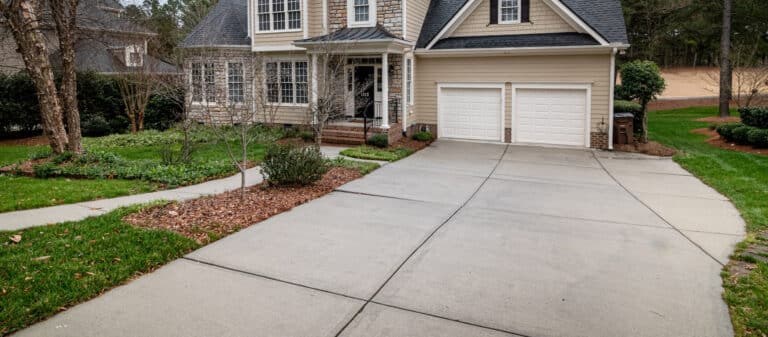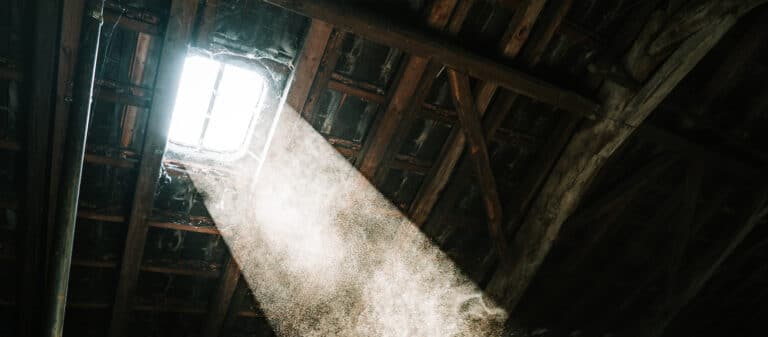Most home insulation projects typically start in the attic, but there are many advantages to adding an extra layer of insulation between levels of your home in the ceiling.
Since heat naturally rises, ceiling insulation offers extra resistance against conductive heat. It keeps lower-level rooms just as warm as the attic during cold NEPA winters and demands less of your HVAC system.
While home insulation is easier to install during home construction, there are still several options available to insulate an existing ceiling structure.
This guide will illustrate the importance of ceiling insulation and the best options for your home and budget.
Why Is Ceiling Insulation Important?
Ceiling insulation helps regulate indoor temperature by reducing conductive heat transfer and trapping heat from your HVAC system during winter. Likewise, ceiling insulation can also trap cool air during the summer, placing less strain on your heat and cooling system and saving you money on energy bills.
Some experts estimate that up to 30% of your home’s heat can escape through your ceiling without proper insulation.
Insulating the ceilings in your home also has additional benefits, such as noise reduction, improved air quality (fewer allergens), reduced drafts, and less condensation that can lead to mold.
Lastly, ceiling insulation can increase the value of your home, helping you build more equity.
Types of Ceiling Insulation
Choosing the best ceiling insulation depends on various factors, including your budget, how much insulation is currently above each ceiling, and whether or not your home is finished. Here are the most common types:
1. Spray Foam Insulation
Spray foam insulation is the most efficient way to insulate any part of your home, including your ceiling.
Installers can use this self-expanding polyurethane foam to fill in cracks and gaps between the ceiling cavity, offering the most dense and complete insulation available.
Closed-cell spray is also known for having the highest R-value (thermal efficiency) of any insulation product on the market.
Advantages:
- Air sealing: Spray foam insulation provides a near-airtight seal, preventing drafts and improving energy efficiency.
- Moisture resistance: It’s excellent for areas prone to moisture, as it doesn’t absorb water.
- Durability: Once installed, spray foam can last the lifetime of your home without settling or degrading.
Considerations:
- Cost: Spray foam is one of the most expensive insulation types.
- Professional installation: Due to its complexity, it must be installed by trained professionals.
2. Fiberglass Batt Insulation
Fiberglass batt insulation’ is one of the most popular options for DIY or professional ceiling insulation. Each batt consists of fine glass fibers arranged into a flexible, wool-like material that helps block heat transfer and other small particles. Batts typically come in pre-cut rolls or panels, making them relatively easy for non-specialists to install.
Advantages:
- Affordable: Fiberglass insulation is one of the most cost-effective options and can be installed DIY.
- Fire-resistant: The material is non-combustible, which adds a layer of safety to your home.
- Soundproofing: Fiberglass batts have excellent noise-reduction qualities, making them ideal for homes in noisy areas.
Considerations:
- Installation challenges: Improper installation can reduce its effectiveness, so professional installation is recommended.
- Moisture sensitivity: Fiberglass can lose its insulating properties if it becomes wet.
3. Blown-In (Loose-Fill) Insulation
Blown-in insulation, commonly referred to as loose-fill, is an option to consider for existing ceiling cavities. Homeowners can choose from blown-in fiberglass insulation, which offers many of the same benefits listed above, or cellulose insulation, which is equally as efficient and considered more environmentally friendly.
Advantages:
- Great coverage: Blown-in insulation is ideal for ceilings with irregular shapes or limited access, as it fills gaps more effectively than batt insulation.
- Versatile materials: You can choose between cellulose (recycled paper), fiberglass, or mineral wool.
- Energy efficiency: It offers excellent thermal performance, keeping your home insulated year-round.
Considerations:
- Professional installation required: Blown-in insulation requires specialized equipment, so DIY installation isn’t practical.
- Settling: Over time, the material may settle and lose some insulating properties, so periodic inspection is necessary.
4. Rigid Foam Board Insulation
Overview: Rigid foam boards are dense, durable panels made from polystyrene, polyisocyanurate, or polyurethane that can be installed along the interior of the ceiling cavity. These boards are highly efficient but typically need to be sealed around the edges with spray foam to prevent heat loss.
Advantages:
- High R-value: Rigid foam boards provide one of the highest insulation ratings (R-value) per inch of thickness, making them ideal for homes with limited space.
- Moisture-resistant: Foam boards resist water, making them suitable for ceilings that may be exposed to humidity.
- Long lifespan: They do not deteriorate over time, offering consistent performance.
Considerations:
- Cost: Rigid foam boards can be more expensive than other materials and usually require air sealing or spray foam for complete protection.
- Installation: Proper installation is crucial to avoid gaps between boards, which can reduce insulation efficiency.
Factors to Consider When Choosing Ceiling Insulation
Before selecting the right insulation for your ceiling, it’s essential to consider the following:
- Finished vs. Unfinished Spaces: New construction homes have the luxury of choosing from several ceiling insulation options. However, finished homes will need to opt for spray foam or blown-in insulation, which can be installed by drilling holes to allow the blower access to the ceiling cavity.
- Budget: Insulation costs vary widely, and you will pay more for higher-value insulation. Spray foam typically has the highest R-value and budget, while fiberglass is a more affordable but less long-lasting alternative.
- R-Value: Insulation R-value measures the insulation’s thermal resistance. The higher the R-value, the better the insulation performance. Different materials and thicknesses provide varying R-values.
- Installation: Some insulation types, such as fiberglass batts, are DIY-friendly, while others require professional installation. Ensure you have the right tools and knowledge before attempting a project yourself.
- Moisture Control: If your home is prone to humidity or moisture, you’ll need insulation that resists water to prevent mold and mildew growth.
Since ceiling insulation is typically more difficult than attics and requires proper ventilation to prevent moisture buildup, we always recommend professional assistance whenever insulating a ceiling or walls. For help with any insulation project in Northeast Pennsylvania, call the experts at NEPA Energy Smart for a quote on inspection or service!
Frequently Asked Questions
How much insulation do I need for my ceiling?
The amount of insulation depends on your climate and the material you choose. Colder climates require a higher R-value, typically between R-30 and R-60. Warmer climates may need less, around R-19 to R-30.
Can I install ceiling insulation myself?
Some types of insulation, like fiberglass batts, can be DIY-installed if you’re handy and follow safety precautions. Others, like spray foam and blown-in insulation, require professional installation.
How long does ceiling insulation last?
Properly installed insulation can last 20-30 years or more, but some materials may settle over time and require maintenance. Spray foam and rigid foam boards generally have the longest lifespans.











